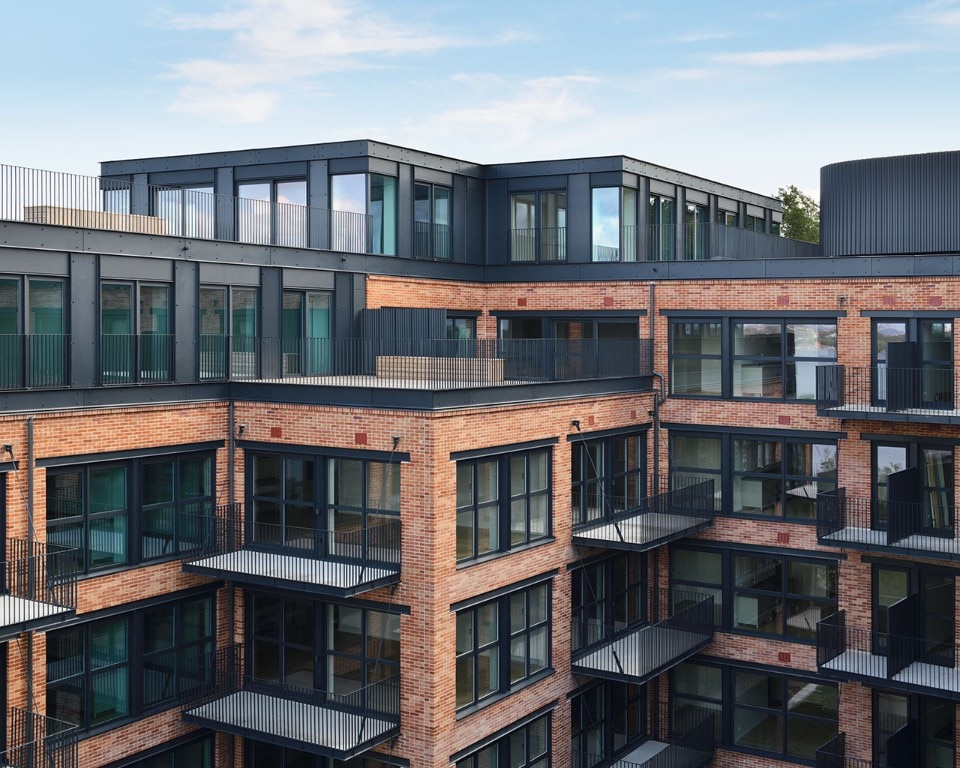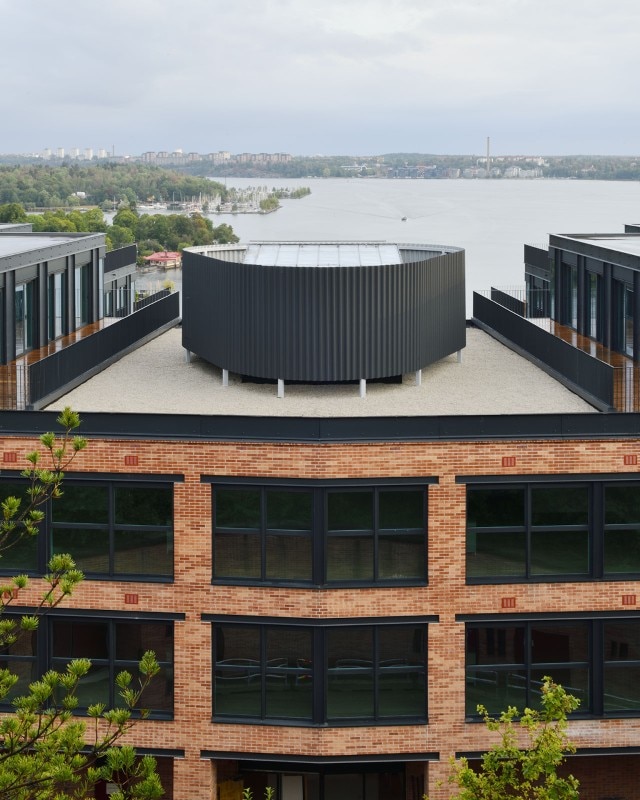Hermansson Hiller Lundberg converted the 1990s office building into high-end residences in Nacka, a former industrial site overlooking Saltsjön bay on the Baltic Sea about 5 km from Stockholm’s city centre.
The architectural integrity of the facades of the original structure was maintained while its layout changed to accommodate the new residential use. The 21,600 sqm building counts today around 200 apartments divided into 69 typologies. The redevelopment has been carried out by Oscar Properties, the same investor behind OMA’s Norra Tornen towers and BIG’s 79&Park housing complex in the Swedish capital city.
The project, now known as No.4, has been nominated for the ROT Award at the end of March 2019, a prize given to the best conversion project in Sweden every year.

With its population expected to increase by 11% by 2020, Stockholm is considered one of the fastest growing cities in Europe. The capital city is currently working on its urban expansion, adapting its infrastructure to accommodate these changes by adding 20 km to its existing metro lines by 2027. Nacka is part of this larger strategy, and in 2013 plans were undertaken to build 14,000 new homes and 10,000 workplaces – with completion expected in 2030.
In this context, Oscar Properties is also currently developing Gasklockan, a residential tower and landscaped area replacing a gasholder in the suburb of Hjorthagen. The tower designed by Herzog & de Meuron and Piet Oudolf is scheduled for completion in 2022.
The regeneration of former industrial sites such as Nacka, including the conversion of office buildings, has become more and more part of the debate relatedly to issues of identity (as happened for Mecanoo’s Villa Industria in the Netherlands) and the right to housing (as for the case of Terminus and Templefield House in London).

In the case of No.4, the vacant building was acquired by Oscar Properties, which issued an invited competition for its renovation. Hermansson Hiller Lundberg told Domus that Nacka Strand n.4 was originally built for two big tenents: Apoteket, a pharmaceuticals company, and Telia, a telephone and mobile network operator. Both companies were state-owned and with national monopoly, but were recently privatised. “Each tenant had half of the mirrored plan,” says Samuel Lundberg, explaining the existing plan.
No.4 sits on a steep and rocky site in Nacka and develops on eight floors; its comb-shaped plan opens towards the communal gardens facing the water. Its mirror-image original distribution system relied on two monumental staircases. The change in the function of the building imposed the implementation of the vertical connections by the addition of eleven new stairs.

In order to transform the offices into residences, the project dealt with the complexity of the serrated plan. The large size of the building itself combined with the need to fragment the existing spaces derived from the shift in the function – together with the requirements from the client – brought to the large number of typologies, sizes and layouts of the apartments.
Furthermore, the efforts of Hermansonn Hiller Lundberg were directed towards the creation of an armonious whole between the plans and the inherited envelope. This aspect has been solved through a process of continuous confrontation with the facades: “Rather than having a calm facade masking an unruly interior, or having a strict façade imposing its order on the interior, we strived to have the facade and the plan seemingly effortlessly supporting each other. Being a conversion project, with many built-in complexities and restrictions, this light touch demanded a lot of effort.”

The one-storey black-steel volumes crowning the building on three floors are the penthouses, as additions to the original building. All the typologies take advantage of the views on the sea through the openings, most of which are floor-to-ceiling height, and the generous terraces, both important feature of the residences. Indeed, the largest apartment of 188 sqm has a 275 sqm terrace, while the smallest counts 35 sqm with a 11 sqm terrace.





























